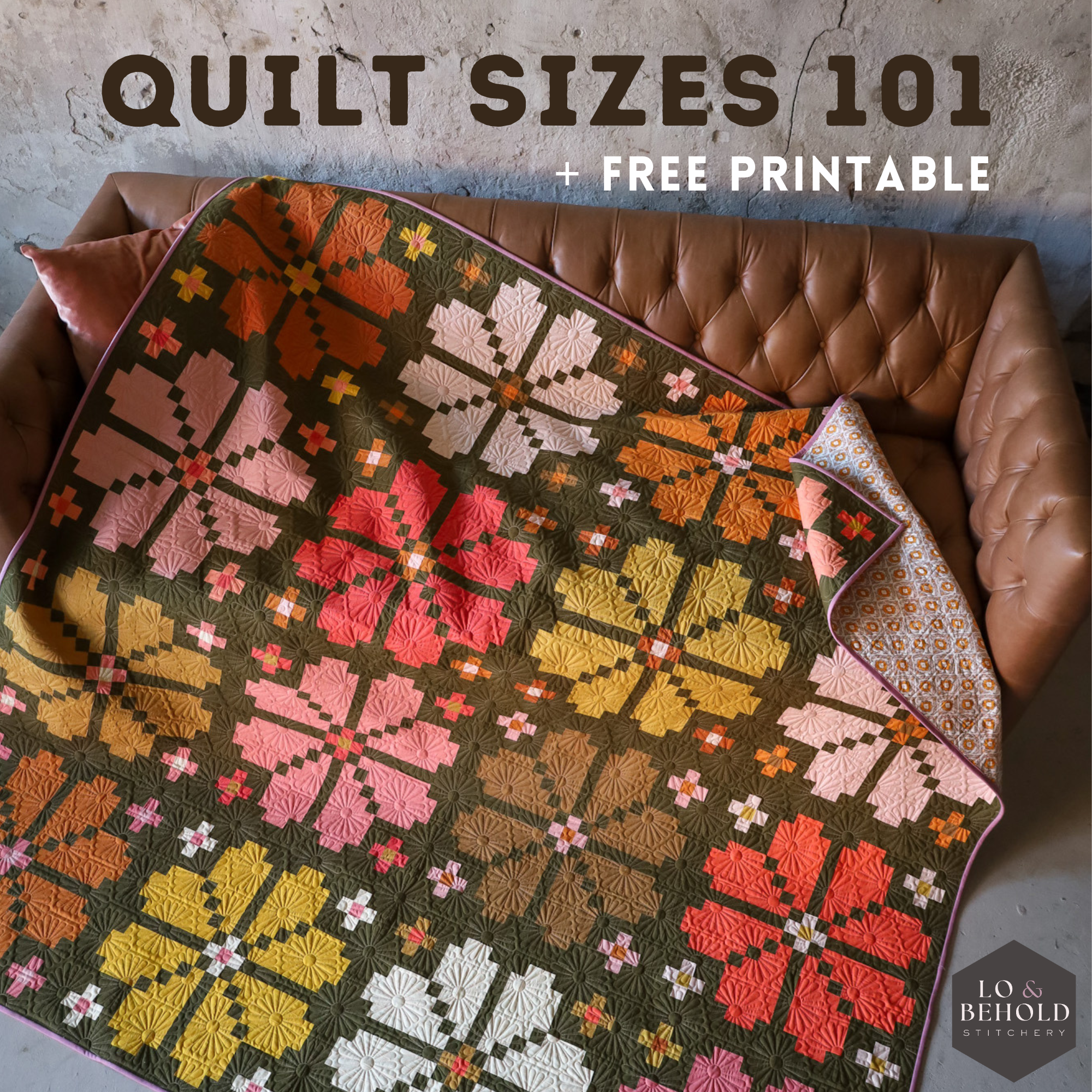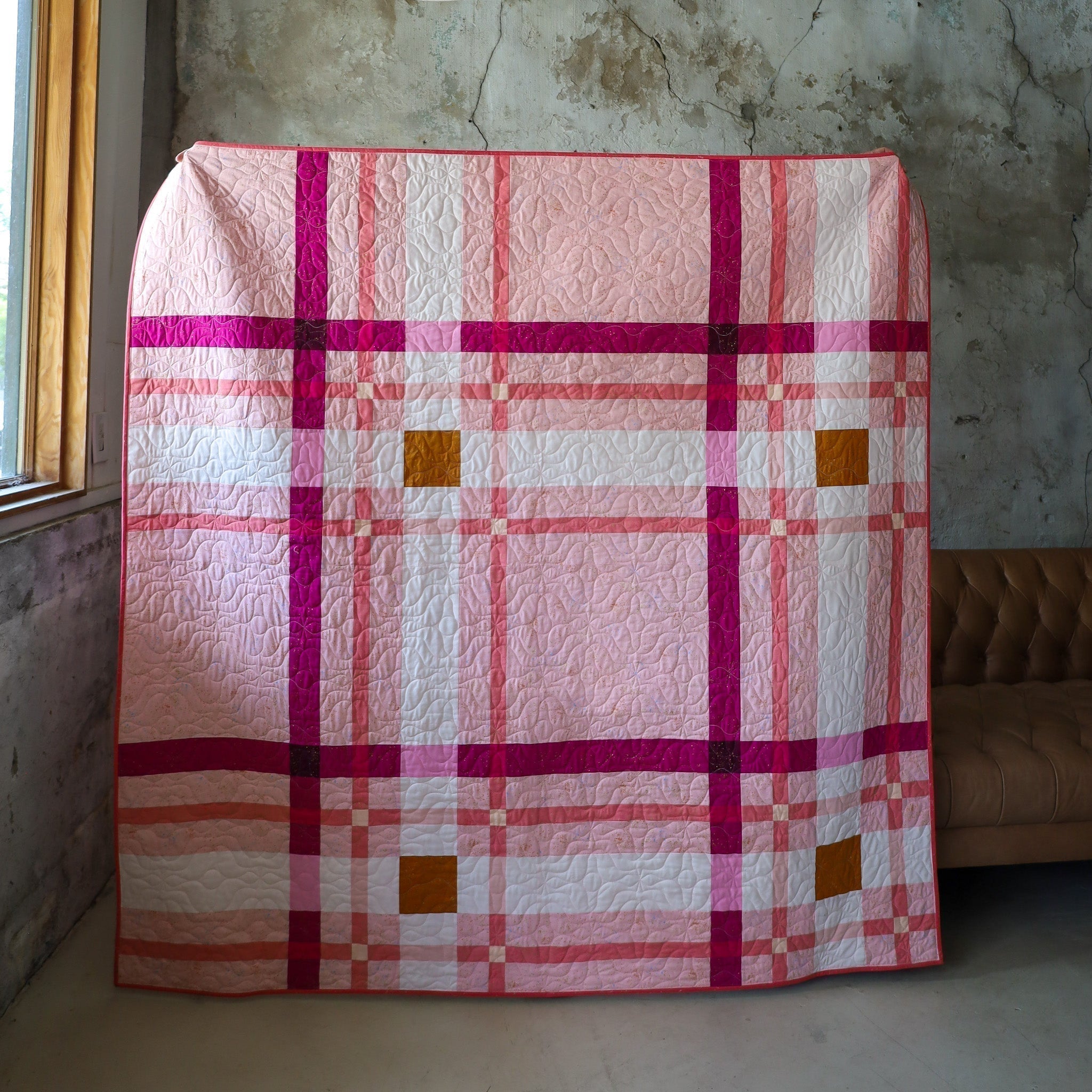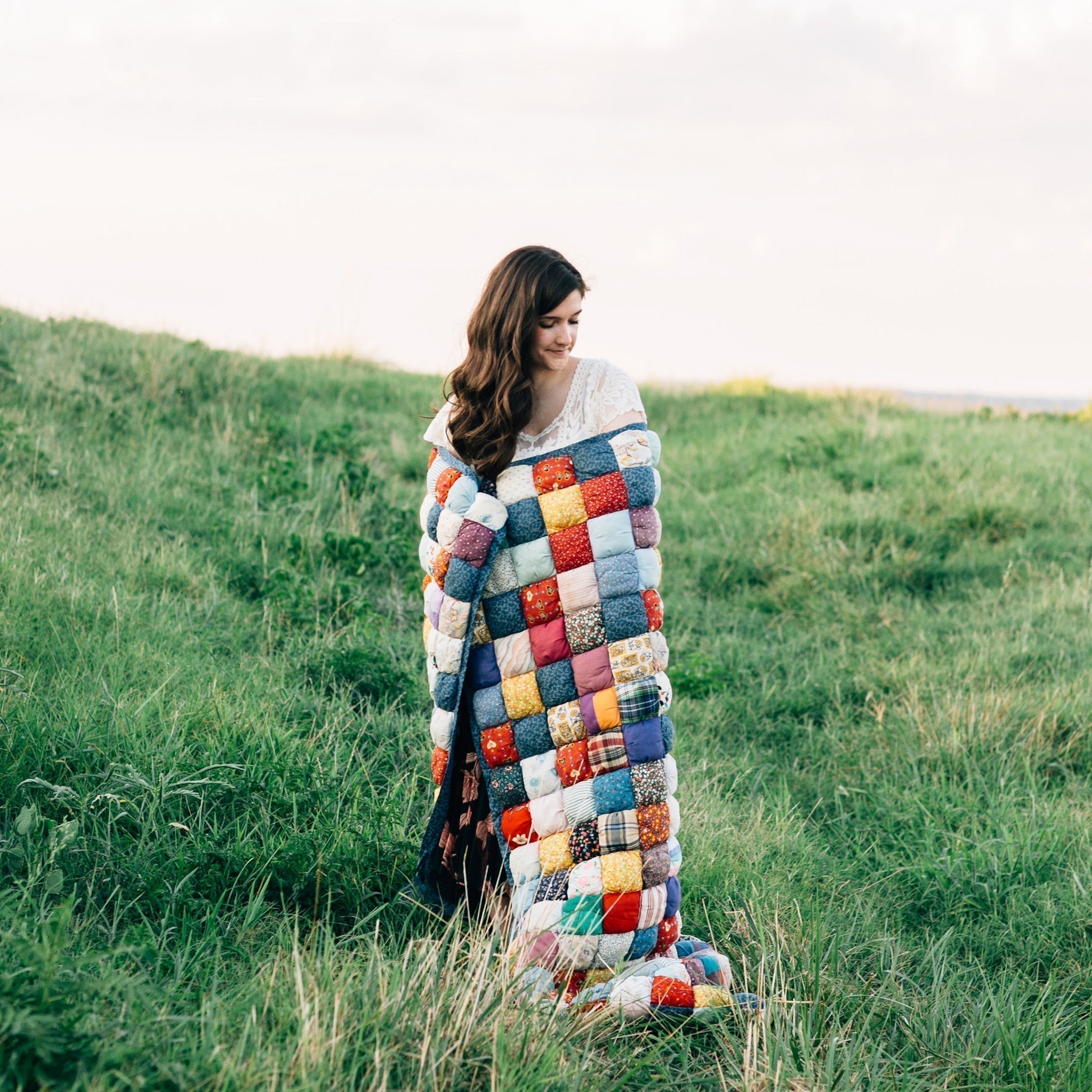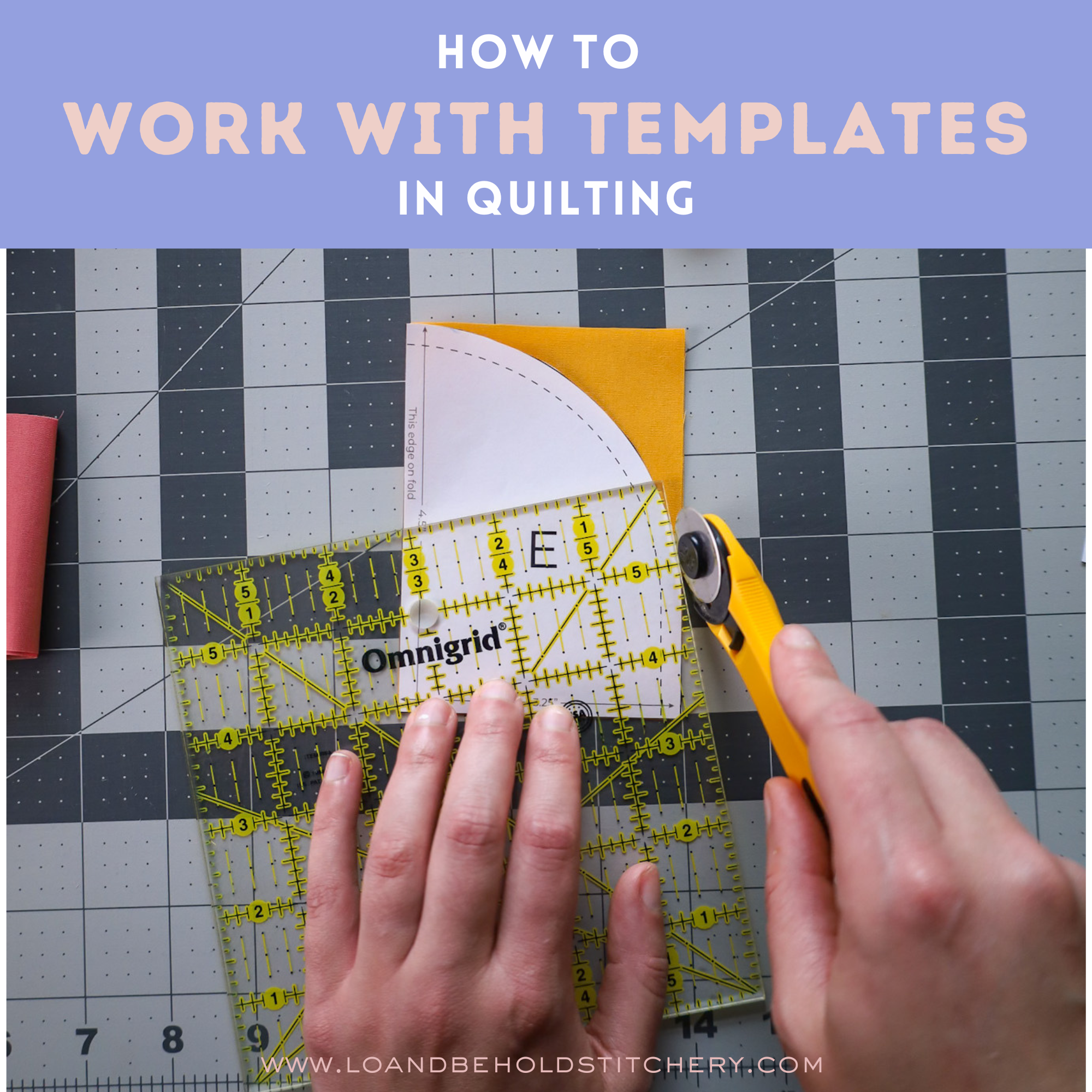Quilt Sizes 101 + Free Printable

Uncover the differences between quilt sizes.
written by: Rebecca Bratburd
If I could go back in time, I’d tell my beginner quilter self: try learning new skills or experimenting with wild color combinations using smaller formats. Some quilters work on palate cleansers, like zipper pouches, color or improv studies, or other small, manageable projects in between larger quilts.
And when the inspiration strikes to make a bed quilt, let the smaller projects take a back seat until the big one is going through the wash for the first time.
From wall hangings to king size quilt patterns (and everything in between), there are so many options when choosing your next project. There’s nothing wrong with a house full of throw size quilts. Throws can be easier to manage than larger projects especially if you’re working on a deadline for a gift. It’s not like you’ll regret making another throw size quilt, necessarily.

This guide offers a practical overview of the most common quilt sizes. When planning your next quilt project, picking your quilt size is the inevitable first step. It’s the prerequisite for buying fabric (or whittling down your stash!), since you won’t know how much fabric you need until you conclusively choose a size.
Before we dive in, let’s discuss a few important notes. First, some patterns use different layouts for different quilt sizes. In other words, sometimes a baby quilt isn’t simply a shrunken down king-size quilt. The designer usually notes this, but sometimes it’s a few pages into the pattern. Make sure to check how the different sizes look before committing!
Next, sizes are not universal, from one designer or book to the next, or even pattern to pattern. The sizes offered are dependent upon the overall design of the quilt, the finished block size, sashing, and a whole host of other factors.
Use this guide to better understand the difference between common quilt sizes, and how smaller or larger projects might be a great choice for your next quilt.
DOWNLOAD: Save this chart as a convenient PDF!

Quilt sizing terminology
Blocks (also known as coasters, placemats, or mini quilts)
Sometimes, a single quilt block can make us so happy that it can stand alone as a tiny quilted project. This can take many forms, including coasters and placemats. But that’s just the beginning! Because these quilts are so small, they can decorate desks, tables, kitchen nooks, doll houses, or serve as thoughtful gifts or stocking stuffers.
Generally, this category includes projects that finish at smaller than 20” on one side. (P.S.: I come back to our Mini Heart Coaster and Scrappy Coaster free projects time and time again!)

Wall hangings (also known as wall art, pillows, table runners)
Technically, a wall hanging quilt can be any size as long as it hangs on a wall. We’ve displayed quilts as large as baby or crib size, and as small as a single block, on our walls. In Lo & Behold Stitchery’s catalog of quilt patterns, wall hangings are smaller than baby quilts, yet bigger than a coaster or a placemat.
Projects ranging from about 20” to 30” on one side fall in this category.

Pattern: Model Farm (wall hanging size)
Baby
The majority of Lo & Behold quilt patterns include a baby size layout. This is a great size, obviously, for new family additions! From tummy time to doctor visits, a baby quilt integrates into strollers, car seats, chairs, cribs, rockers, and even the floor. We’ve gone so far as to make this size quilt for our canine babies to snuggle with in their crates.
These cute quilts generally measure smaller than 40” on one side, and range from the mid 30”s, give or take a few inches.

Pattern: Granny Patch (baby size)
Crib (also known as lap)
Crib and lap quilts measure between 40” and 50” on one side. While they’re still on the smaller side, they might be a bit much for new parents to tote around. They’re perfect for cribs or the couch.

Pattern: Getaway (crib size)
Throw (small or large)
The throw is such a versatile size because it can be, hypothetically, hung on a wall, tossed on a sofa, folded at the foot of a bed, used on road trips, or as a picnic blanket. Every Lo & Behold quilt pattern comes in a throw size.
As a general guideline, throw size quilts usually measure about 60” on one side and large throws can be up to 70” to 80”.

Pattern: Ruby Sue (throw size)
Bed (twin, queen, king)
Bed size quilts are the toughest to define, though Lo & Behold Stitchery tries to follow standard bedding as closely as possible. Twin is typically 72” x 90”, full is 80” x 90”, queen is 90-95” x 90-95”, and king is larger than 100”.
That said, everyone has different preferences for how much overhang they want. Your best bet is to measure the bed you're making the quilt for, determine how much overhang you prefer, and then find a pattern that most closely matches your desired size.
Pattern: Knitted Star (bed size)
How to choose your quilt size
New quilt patterns are released almost every day it seems, so it’s no wonder it’s easy to get decision fatigue. Just as picking the design, the fabric substrates, and the finer touches, like the batting and the thread, picking your quilt’s size will certainly impact the final product. Let’s start by getting clear on why you’re making your next quilt.
Set a purpose (for your quilt)
When you’re browsing patterns for your next quilt, what do you think about? Here are a few questions to start with:
- What's motivating you? A special occasion, great fabric deal, or just for fun?
- How much time do you have? Consider deadlines vs. learning new skills.
- Who's it for? Think about their age, lifestyle, and how they'll use it.
- What size works? Small projects like wall hangings cost less and finish faster.
- Hand quilting or machine? Be realistic about time and stamina for larger quilts

Square or rectangle quilt?
This is a quilt question as old as time! As you’re thinking about where your quilt will be most of the time, is one shape more fitting than the other? Personally, I love both square and rectangular quilts for all purposes, and let my adoration for individual patterns drive my choices.
Name your price
Depending on your project, you may have a budget in mind. If you're making a quilt for a fundraiser or charity, you might want to keep costs down with a throw size quilt. On the other hand, if it's a raffle quilt to raise money for charity, you might want to splurge on a bed size quilt to bring in the most money.

Wrapping up
It's easy to collect quilt patterns, but much harder to make every quilt you want! Choosing the right size gets easier with experience. "Right sizing" your project can mean the difference between a finished quilt or another fabric pile in your WIP pile.
Consider your motivations and go from there. As you continue quilting, note how long certain sizes take relative to their complexity. Once you understand timing and costs, selecting a quilt size becomes a fun part of the creative process.
There's no right or wrong quilt size. It's about finding what checks the most boxes for you.
Happy quilting!
DOWNLOAD: Save this chart as a convenient PDF!



